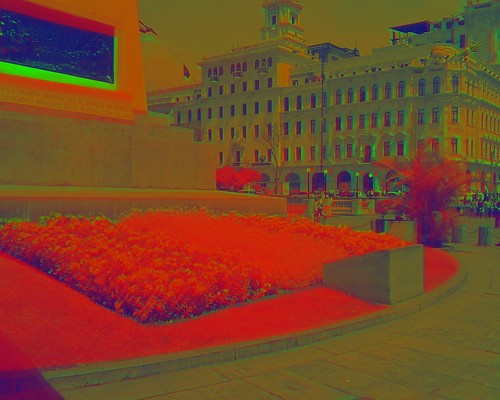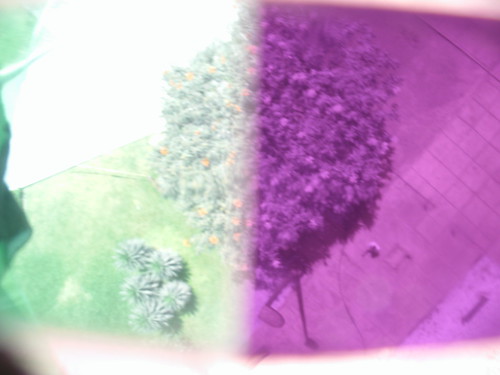
Near-Infrared Camera
[[TOC]]
We've been modifying cheap cameras to take infrared (IR) photos. Though we cannot perceive it with our eyes the plants and other materials around us reflect wavelengths of light in infrared. Interestingly the sensors in digital camera can react to wavelengths of light in the near infrared. Presently IR light is filtered out from our cameras so that digital images look normal to us. Removing that filter allows us to pickup information in IR using a digital camera (Caution is required to remove this filter! Please study up before trying any of this!).
See, plants use visible light (mainly blue and red light) as 'food' -- not so much green light, which is why they reflect green away, and look green to our eyes. They also happen to reflect near infrared light (which is just beyond red light, but not visible to the human eye). This is because they chemically cannot convert infrared into usable food, and so they just bounce away to stay cool. The above image shows what colors of light plants absorb vs. reflect away.
By using this unique property of plants, plus our ability to take near-infrared photos we can create composite images which highlight where plants are and how much they are photosynthesizing.
Learn about NDVI images and how they work
Learn to remove the infrared filter from your camera: https://www.flickr.com/photos/lpimaging/sets/72157625698391563/with/5355456142/
NDVI example:
NRG example:
How to capture infrared and visible photographs
By putting both an infrared-pass filter and an infrared-block filter on the same camera, you can get both infrared and visible light with one photograph... though the areas don't overlap. This means you can get such imagery from the air using balloon mapping, while only risking one camera. Another alternative is to use a stereo camera system like the one being developed by the New York City chapter.





